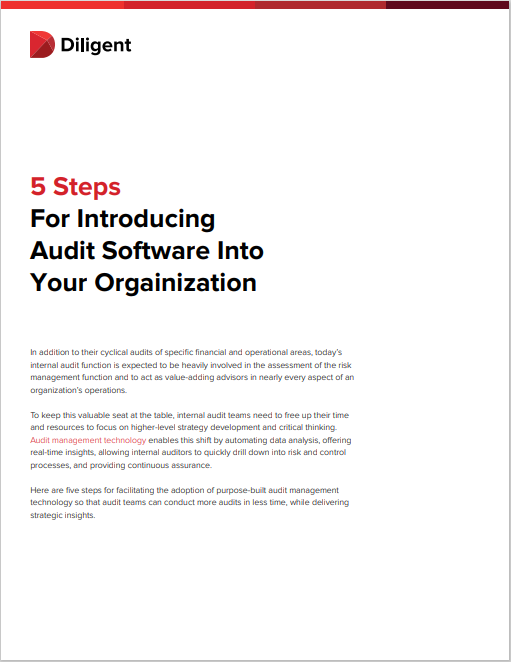

5 Steps For Introducing Audit Software Into Your Organization
In addition to their cyclical audits of specific financial and operational areas, today’s internal audit function is expected to be heavily involved in the assessment of the risk management function and to act as value-adding advisors in nearly every aspect of an organization’s operations.
To keep this valuable seat at the table, internal audit teams need to free up their time and resources to focus on higher-level strategy development and critical thinking. Audit management technology enables this shift by automating data analysis, offering real-time insights, allowing internal auditors to quickly drill down into risk and control processes, and providing continuous assurance.
Here are five steps for facilitating the adoption of purpose-built audit management technology so that audit teams can conduct more audits in less time, while delivering strategic insights.









